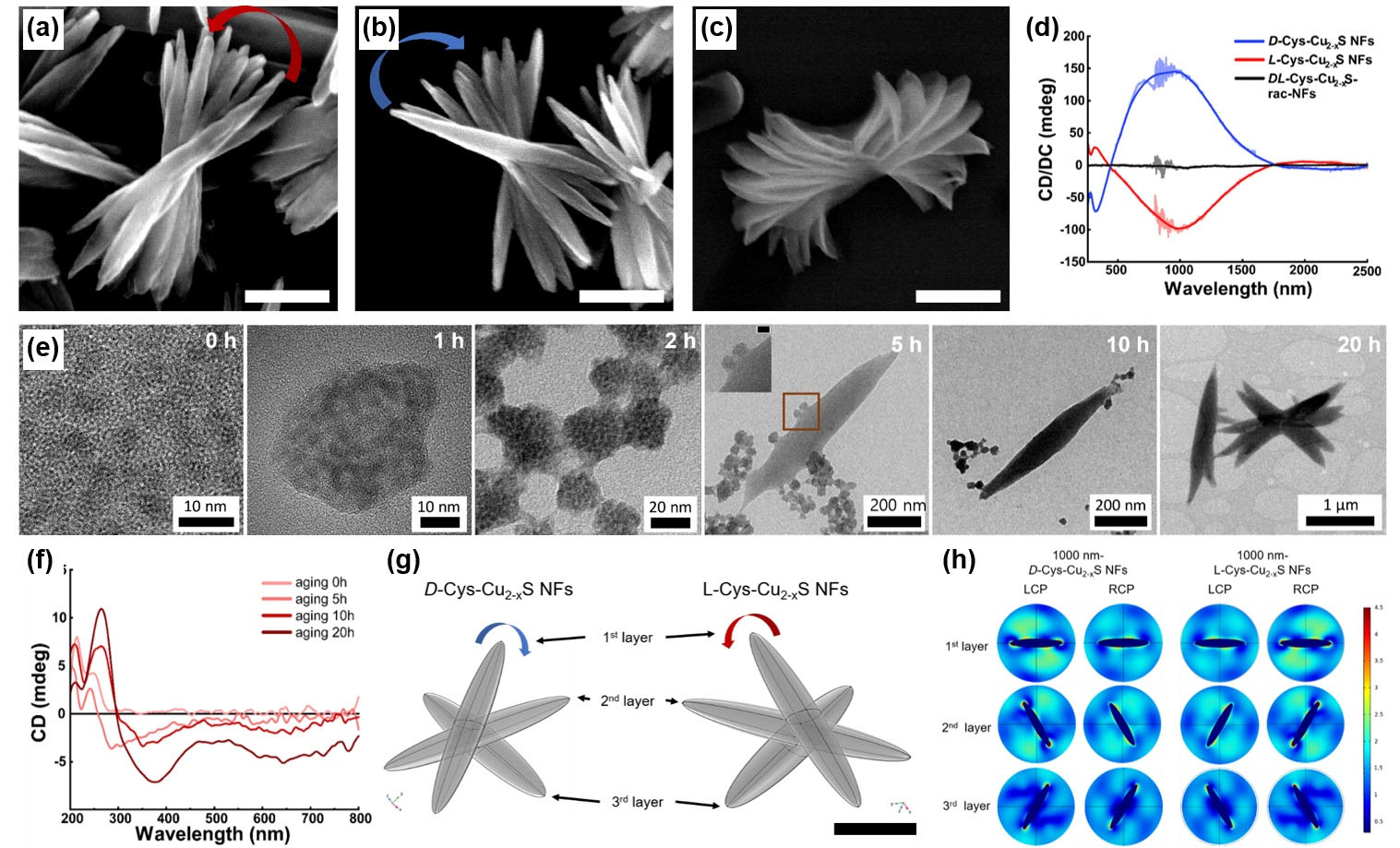| Apr 25, 2022 |
New chiral ceramic nanostructures: Broad chiroptical activity from ultraviolet to short-wave infrared
(Nanowerk News) Professor Yeom’s research team (Department of Materials Science and Engineering, KAIST) developed chiral ceramic nanostructures with broad chiroptical activity through a self-assembly process. They controlled the attraction and repulsion forces with copper sulfide nanoparticles (NPs) coated with cysteine (Cys), which led to the formation of chiral nanoflowers (NFs) on a sub-micrometer scale. The synthesized NFs showed broad chiroptical activity from the ultraviolet (UV) to short-wave infrared (SWIR) region.
|
|
The study was published in ACS Nano ("Broad Chiroptical Activity from Ultraviolet to Short-Wave Infrared by Chirality Transfer from Molecular to Micrometer Scale").
|
|
An object or a system is chiral if it is distinguishable from its mirror image; that is, it cannot be superimposed onto itself. Materials that have differential absorption properties of left- and right-circularly polarized light inhibit chiroptical activity.
|
 |
| Figure 1. (a-f) Synthesis of copper sulfide NPs, self-assembly NPs to NFs, and their chiroptical activity. (g-h) Simulated chiroptical activity of NFs, which show differential absorption properties of left- and right-circularly polarized light. (Image: KAIST) (click on image to enlarge)
|
|
SWIR light can be utilized for the optical stimulation of neurons and in bio-imaging and tumor evaluation applications due to its high transparency when used with human skin.
|
|
Taking advantage of the nontoxic, inexpensive and tunable properties of copper sulfide nanomaterials combined with SWIR chiroptical activity, synthesized NFs will allow the realization of applications in bio-imaging, photothermal therapy, and polarization bio-encryption.
|
|
However, developing chiral nanostructures with chiroptical activity in the SWIR region was a challenge because the materials needed 1) sub-micrometer dimensions similar to the wavelength of SWIR light, 2) chiral structures, and 3) the ability to absorb SWIR light.
|
|
To address these limitations, professor Yeom’s team used 1) self-assembly by controlling the attraction and repulsion forces between copper sulfide NPs and 2) Cys, a chiral molecule, as a surfactant in NPs synthesis.
|
|
With the self-assembly strategy, NPs assembled into NFs with dimensions of 1.5-2 um. During this process, the molecular chirality of Cys was transferred to the nanoscale chirality of NPs and then to the micrometer-scale chirality of NFs.
|
|
Furthermore, Yeom’s team found that the origin of the chiroptical activity was from the chiral geometry of the NFs by analyzing the phase transformation and through a computational simulation. Thus, this research provides a strategy to synthesize chiral nanomaterials with broad chiroptical activity by utilizing the self-assembly of NPs.
|
|
“We will work to expand the wavelength range of chiroptical activity to the short-wave infrared region, thus reshaping our everyday lives in the form of a bio-barcode that can store a vast amount of information under the skin,” said Professor Yeom.
|

